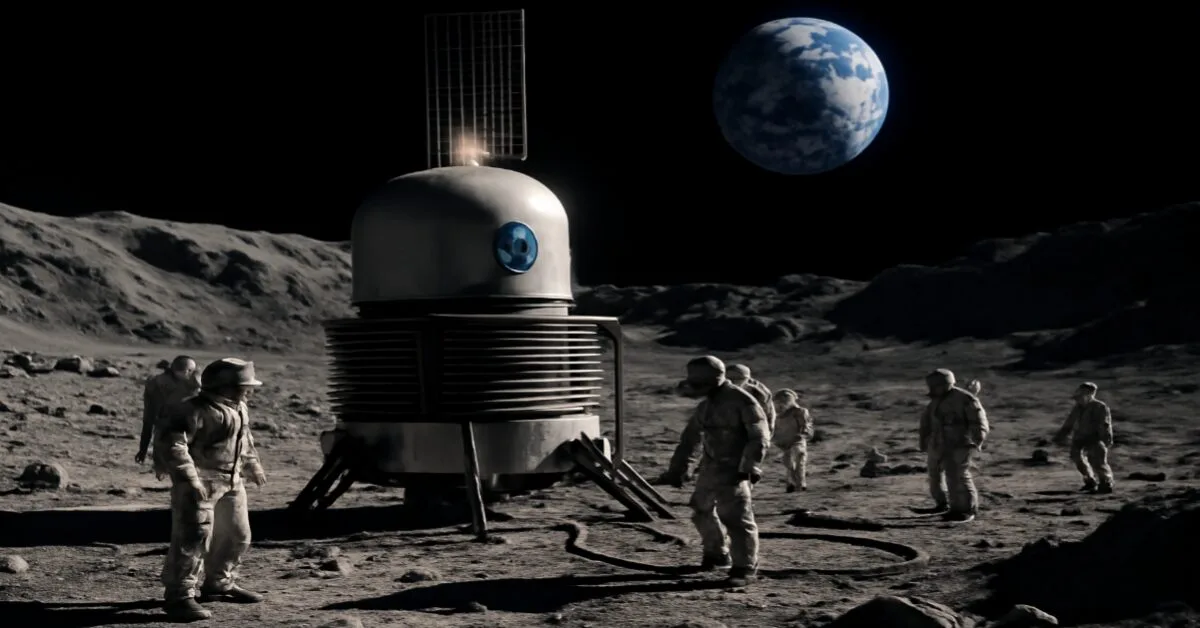Highlights
NASA is accelerating efforts to build a nuclear reactor on the Moon by 2030, a groundbreaking step to support sustained human presence and operations on the lunar surface. This energy source is critical because the Moon’s environment—with two weeks of darkness during lunar nights—makes solar power unreliable for continuous use.
Why NASA Wants a Lunar Nuclear Reactor by 2030
The U.S. space agency NASA has unveiled plans to send a compact nuclear reactor to the Moon by 2030 as part of its Artemis program, which aims to establish a permanent, sustainable human presence on the lunar surface. This ambitious move addresses a vital challenge: powering future lunar habitats, scientific labs, rovers, and resource mining operations through the Moon’s long, lightless nights.
Unlike Earth’s abundant sunlight, the Moon experiences about two weeks of continuous darkness, severely limiting the effectiveness of solar panels. The proposed nuclear reactor, with a target output of at least 100 kilowatts (enough to power roughly 80 American homes), promises a steady, reliable, and continuous source of energy independent of sunlight or weather conditions.
Powering the Future on the Moon and Beyond
NASA’s acting administrator Sean Duffy has framed this reactor development as critical for the future of lunar exploration and broader space ambitions. The nuclear reactor will:
- Enable round-the-clock power supply, critical for life support systems and scientific instruments.
- Support operations in permanently shadowed craters, where water ice deposits are found but sunlight is nearly absent.
- Facilitate future lunar mining, habitat construction, and rover activities even during the two-week lunar nights.
- Serve as a technological stepping stone for long-term missions to Mars, where solar power is even less reliable due to greater distance from the Sun.
Experts say nuclear power is not only highly efficient but might be the only viable option for sustained human activity on the Moon. Technologies like NASA’s Kilopower project have laid the groundwork, demonstrating small nuclear fission systems that could safely operate in space.
The Geopolitical and Strategic Implications
The race to build nuclear reactors on the Moon is also a geopolitical contest. China and Russia have announced intentions to develop nuclear-powered lunar bases by 2035. Possessing a nuclear reactor could allow a country to establish “keep-out” zones around key lunar resources, granting strategic control in accordance with international space law.
NASA’s accelerated timeline under Duffy reflects the urgency to maintain U.S. leadership in space exploration, preparing for a new era where space power infrastructure becomes a measure of national influence and a foundation for future deep-space missions.
Challenges and Safety
While the vision is bold, experts caution that developing and launching a nuclear reactor by 2030 is technically ambitious and requires substantial financial and institutional commitment. Engineers must address challenges such as:
- Managing extreme lunar temperature swings (up to 200°C difference between day and night).
- Ensuring robust safety measures to contain radioactive material in the harsh lunar environment.
- Designing efficient power conversion systems that can reliably produce electricity from nuclear heat.
Nonetheless, NASA and its partners are optimistic. The project builds on decades of experience with space nuclear technology and aims to demonstrate that nuclear power can safely and cleanly meet the energy needs of lunar and Martian exploration for years to come.
NASA’s plan to place a nuclear reactor on the Moon is not just about powering habitats—it represents a critical leap toward humanity’s long-term presence beyond Earth, unlocking new possibilities in space exploration, scientific discovery, and international space leadership.

















